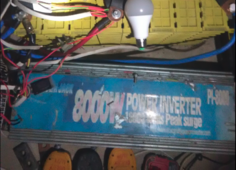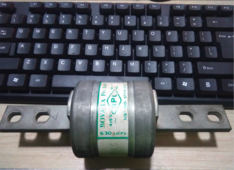I really am surprised at so many doubting a 12v 10kW inverter- I am sitting here using an almost exactly one decade old 8kw continuous, 16kw peak inverter 12v inverter...
It was mounted in my ute until about 2019 (bought in 2014), when it was pulled out and running my caravan while building the shed, and has run 24/7 since then, with only a few short downtimes (moving the van from the camp site to the shed, and a week off when we had to evac for a huge bushfire that threatened my property...
It couldn't quite hit its full power, the battery bank can deliver the amps, but the main fuse is only rated at 630A (its a fuse that was left in the bottom of my toolbox from when I was an apprentice on the railways lol- in the 1980's...
I am planning on running the 12kw 48v inverter, but not until the house is finished- the caravan is 12v for its lights, water pumps and inbuilt tv, hence why I stayed at 12v at the campsite and then the shed
The 20kwh (16x 400Ah cells, currently in 4S4P, at 12v, eventually at 16S 48v) is well under its limits- at 12v, it can handle (in theory, I simply haven't gotten anywhere near it yet, even with the welder going) a maximum continuous discharge of up to 4800A, so the 8kw inverter wouldn't be stretching them at all- the weak point at this stage (and won't be upgraded either) is the cables and main fuse- the cables are 'doubled up' heavy duty truck starter motor cables (same size as used in a v8 16l diesel Scania truck...)
It's 'only' a 'temporary system', but (despite appearances) is totally safe, with both the inverter and loads fused, and is basically 'parts I had lying around' for much of it...

The 'spare fuse' (and only one I have) so hope I don't start blowing them lol)

So far from 'implausible'
(typed this post sitting in the caravan inside the shed, on a decade old 12v 8kw inverter...)




